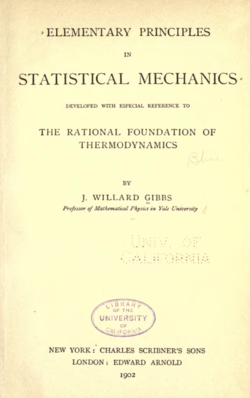V. Kumaran wrote the following comment regarding Elementary Principles in Statistical Mechanics:
... In this, he introduced the now standard concept of ‘ensemble’, which is a collection of a large number of indistinguishable replicas of the system under consideration, which interact with each other, but which are isolated from the rest of the universe. The replicas could be in different microscopic states, as determined by the positions and momenta of the constituent molecules, for example, but the macroscopic state determined by the pressure, temperature and / or other thermodynamic variables are identical.
Gibbs argued that the properties of the system, averaged over time, is identical to an average over all the members of the ensemble if the ‘ergodic hypothesis’ is valid. The ergodic hypothesis, which states that all the microstates of the system are sampled with equal probability, is applicable to most systems, with the exception of systems such as quenched glasses which are in metastable states. Thus, the ensemble averaging method provides us an easy way to calculate the thermodynamic properties of the system, without having to observe it for long periods of time.
Gibbs also used this tool to obtain relationships between systems constrained in different ways, for example, to relate the properties of a system at constant volume and energy with those at constant temperature and pressure. Even today, the concept of ensemble is widely used for sampling in computer simulations of the thermodynamic properties of materials, and has subsequently found uses in other fields such as quantum theory. [5]
